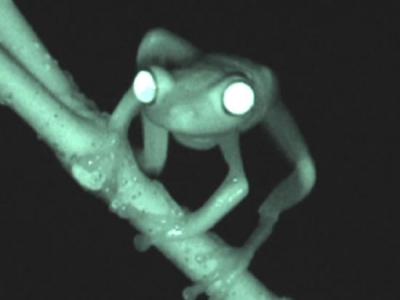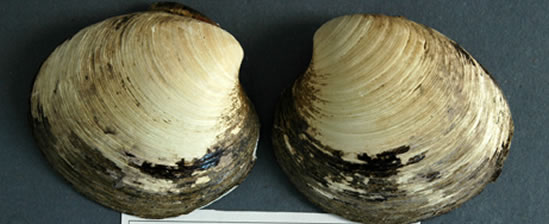Longest-Lived Animal Found -- Clam, 405

This 405-year-old quahog clam, recently fished from Icelandic waters, could be the oldest animal ever found.
If confirmed, the mollusk beats the official record-holder—another quahog clam—by nearly 200 years.
John Roach
for National Geographic News
October 29, 2007
A clam dredged from icy Arctic waters is being hailed as the world's longest-lived animal.
Climate researchers at Bangor University in the United Kingdom recently counted 405 annual growth rings in the shells of a quahog clam.
When this animal was young, Shakespeare was writing his greatest plays and the English were establishing their first settlements in the Americas.
The team plucked the mollusk from 262-feet-deep (80-meter-deep) waters off the northern coast of Iceland.
The team is studying growth lines in clam shells as part of a project to understand how the climate has changed over the past thousand years.
"On a side note, we discovered this very old clam," said Al Wanamaker, a postdoctoral researcher at the university.
Slow Aging
Quahog clams are known for their longevity.
A 220-year-old taken from American waters in 1982 holds the official Guinness Book of World Records oldest animal title. Unofficially, the record belongs to a 374-year-old Icelandic clam housed in a German museum.
The new clam is at least 30 years older, according to the Bangor University team. The animal died when the researchers counted its rings.
"There's probably many others that are actually quite older—we just haven't found them yet," Wanamaker said.
"I think in my stomach if you start getting up around 600, then maybe that would be the maximum—but that's just pure speculation," he added.
Scientists believe the secret to the clams' longevity is a slowed cell-replacement process. But why they age so slowly is unknown.
"It is possible that an investigation of the tissues of these real-life Methuselahs might help us to understand the process of aging," team member Chris Richardson said in a media statement.
Wanamaker added that several research teams want to study the tissue of living quahog clams to tease out the secret.
(Related news: "Happy 120th? Science Pushes Human Longevity" [October 20, 2005].)
Climate Records
The researchers hope to use their shell studies to reconstruct a record of environmental changes over the past several centuries.
"Just like tree rings, those growth lines vary in accordance with the environment," Wanamaker said.
Shell growth is related to water temperature, salinity, and food availability, for example.
A main goal, Wanamaker said, is to determine if the climate of the last half century "is extraordinary compared to the last thousand years."












